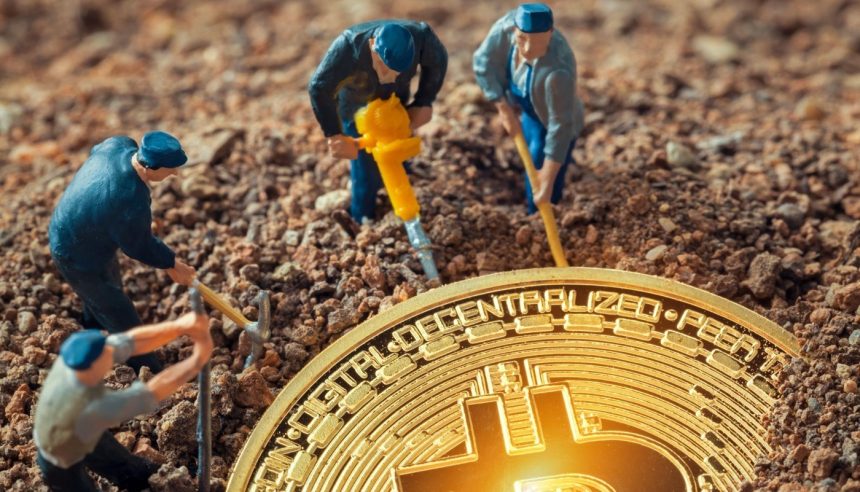Crypto mining, or what is crypto mining, is the process by which transactions are verified and added to a blockchain. Miners use powerful computers to solve complex mathematical problems, earning newly created cryptocurrency as a reward. This article will break down how crypto mining works, its benefits, challenges, and the technology involved.
Key Takeaways
- Crypto mining is essential for validating transactions and securing blockchain networks by solving complex mathematical puzzles, providing miners with rewards for their efforts.
- The Proof of Work consensus mechanism requires significant computational power from miners, incentivizing them through block rewards and transaction fees to maintain network security.
- The environmental impact of crypto mining is substantial, prompting concerns about energy consumption and emissions, leading to increased interest in sustainable practices and innovations like immersion cooling technology.
Defining Crypto Mining
Crypto mining is the heartbeat of the cryptocurrency world. It involves validating transactions on a blockchain and creating new coins, a process that ensures the security and integrity of the entire network. At its essence, cryptocurrency mining aims to add blocks to a proof-of-work blockchain, thus minting new tokens and enabling the seamless operation of the decentralized ledger.
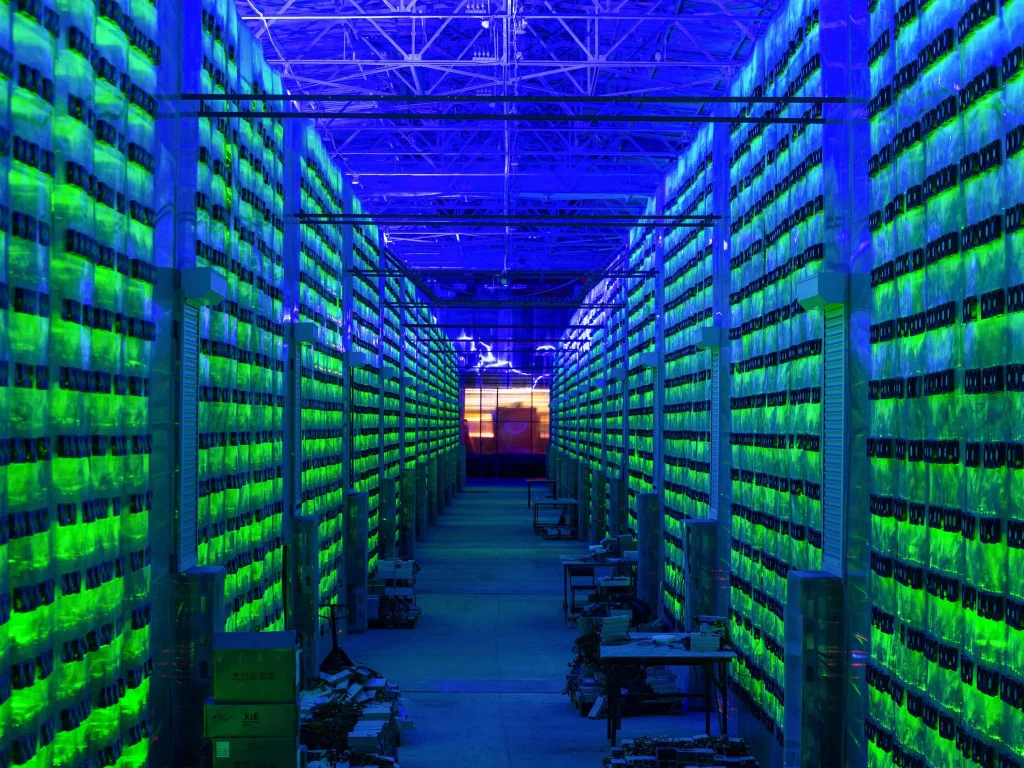
This process prevents fraudulent duplication of digital currency. Confirming cryptocurrency transactions and incorporating them into a distributed record, crypto miners verify the blockchain’s integrity. Only verified participants can modify this digital ledger, ensuring that all transactions are legitimate and secure.
Crypto miners receive newly generated coins as rewards, motivating them to maintain network security. These cryptographic hashes act as digital fingerprints for transaction data, enhancing system security through a cryptographic function that secures the network. Additionally, some individuals choose to mine cryptocurrencies to participate in this rewarding process involving new bitcoin.
How Crypto Mining Works
The journey of a crypto miner begins with specialized computers equipped with mining software. These machines are not your average desktops; they require sophisticated technical skills and substantial computing power to operate efficiently. As miners take on the task of validating transactions, they embark on a complex process that involves solving intricate mathematical puzzles.
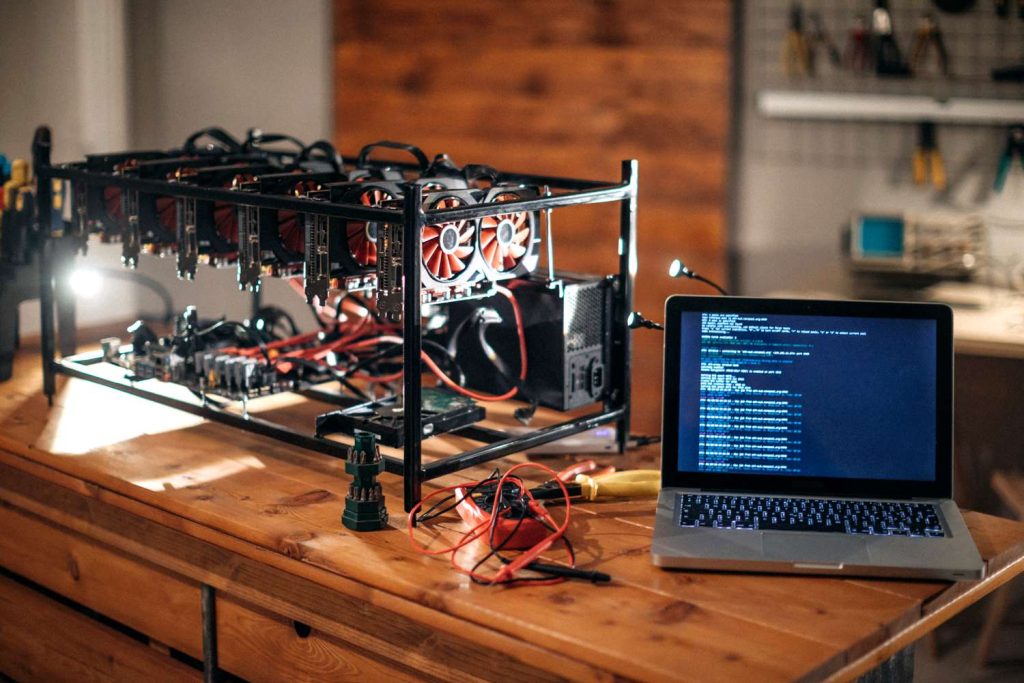
Crypto miners compete by deciphering these puzzles, which are essentially cryptographic numbers that must meet criteria set by the network’s difficulty algorithm. This competitive aspect of mining ensures that only the most dedicated and resourceful miners succeed in adding new blocks to the blockchain. Each transaction undergoes a hashing process, producing a unique 64-digit hexadecimal value.
The sheer volume of transactions and the need for high-level security means that miners can generate trillions of hashes per second. This necessitates an enormous amount of computing power, often referred to as the miner’s hash rate and the efficiency of the hash function. To regulate the mining process and maintain a consistent block generation time, the network periodically adjusts the mining difficulty.
Crypto mining involves verifying transactions, securing the network from double-spending, and maintaining blockchain integrity. Miners contribute computing power and receive newly minted coins as rewards.
The Role of Proof of Work in Crypto Mining
Proof of Work (PoW) is a key consensus mechanism in cryptocurrency, allowing transaction validation without central authority. First introduced in 1999, it has become essential for secure digital transactions. Miners in a PoW system solve complex cryptographic puzzles to confirm transactions and generate unique hashes.
A critical component in this process is the nonce, a variable that miners adjust to find a successful hash. This trial-and-error method requires substantial computational power and processing power, making the mining process resource-intensive. Despite the challenges, the PoW system incentivizes miners by rewarding them with the blockchain’s native currency for adding valid blocks and preparing for the next block.
Mining difficulty in a PoW system adjusts periodically to maintain consistent block generation. Over the past decade, PoW has shown robust security, preventing major attacks on networks like Bitcoin, establishing its role as a cornerstone in cryptocurrency mining.
Mining Rewards and Transaction Fees
Rewards motivate crypto miners to participate in blockchain networks, coming from both block reward and transaction fees. Block rewards, consisting of newly created cryptocurrency, are given to miners who add new blocks. Over time, these rewards reduce periodically, making transaction fees a more significant income source for miners.
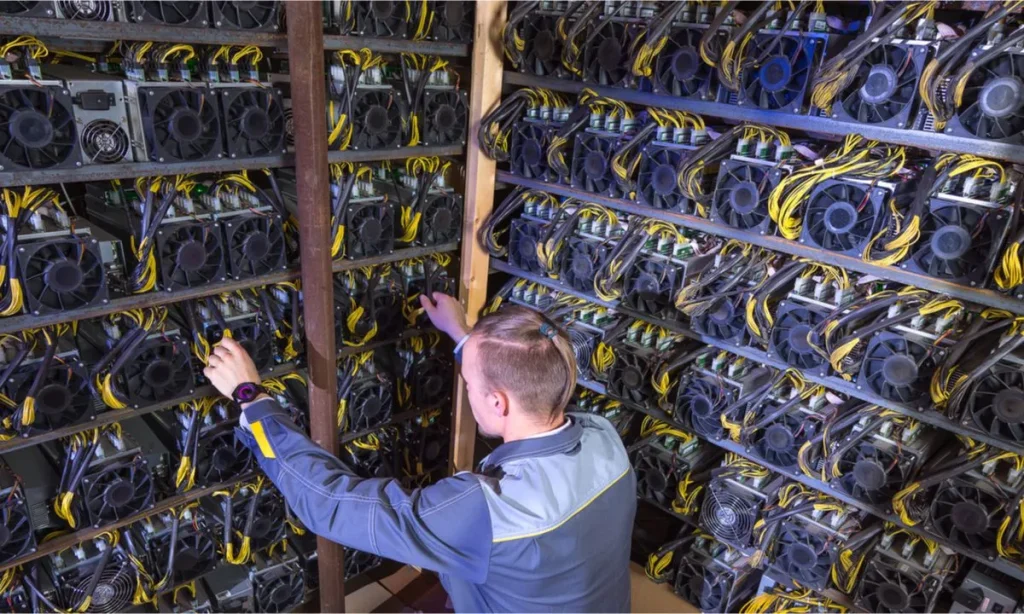
A balance between block rewards and transaction fees is vital to maintain miner interest and network security. As block rewards decrease, transaction fees become more crucial in motivating miners, ensuring network security and efficient transaction processing.
The rewards system motivates miners to verify and validate transactions, contributing to the blockchain ledger’s health and security. Without this incentive, the decentralized nature of cryptocurrency networks would be at risk, underscoring the critical role of mining rewards and transaction fees.
Types of Mining Hardware
The primary types of hardware used for mining cryptocurrencies are specialized GPUs and application-specific integrated circuits (ASICs). GPUs, or graphics processing units, are favored for their ability to perform complex calculations rapidly, making them suitable for mining a variety of cryptocurrencies. On the other hand, ASICs are tailored specifically for mining certain cryptocurrencies, offering superior efficiency and performance.
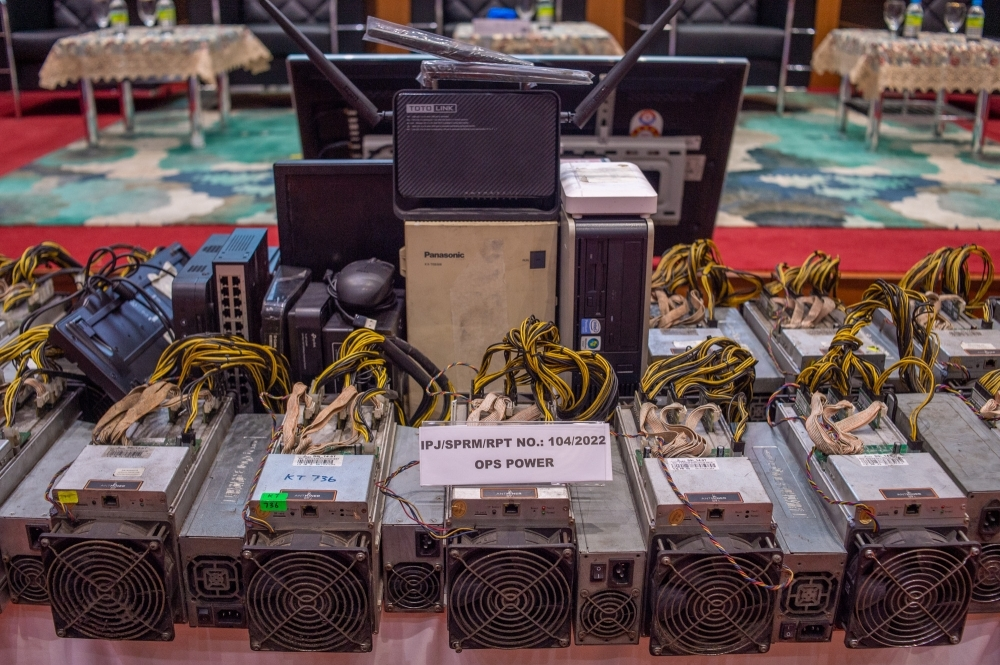
Some examples of high-performance mining hardware include the Auradine Teraflux AH3880 miner, which offers a hash rate of 600 TH/s while consuming 8,700W of power. Another notable example is the Bitmain Antminer S21e XP Hyd 3U, regarded as one of the most efficient Bitcoin mining machines with a hash rate of 860 TH/s. For those interested in mining coins like Dogecoin and Litecoin, the VolcMiner D1 Hydro delivers a hash rate of 30.4 GH/s.
When choosing mining hardware, factors like noise levels, typically ranging from 50 to 85 decibels, should be considered, especially for home use. Ultimately, the choice depends on the miner’s specific needs and the type of cryptocurrency they intend to mine.
Methods of Mining Cryptocurrencies
There are several methods of mining cryptocurrencies, each with its own advantages and limitations. CPU mining, which utilizes a computer’s central processing unit, is mainly used for newer and less popular cryptocurrencies due to its declining efficiency. While it was once a viable method, the increasing complexity of mining operations has rendered it less effective for most cryptocurrencies.
GPU mining, on the other hand, is favored for its ability to perform complex calculations rapidly, leading to faster transaction verifications. This method leverages the power of graphics processing units to handle the intensive computational tasks required for mining. ASIC miners take this a step further by being tailored specifically for mining certain cryptocurrencies, offering superior efficiency compared to CPU and GPU methods.
Cloud mining offers an alternative for those not wanting to invest in personal mining hardware. Users can outsource the mining process entirely, avoiding significant upfront hardware investments. By renting computing power from remote data centers, individuals can engage in crypto mining without managing their own data center equipment.
Joining a Mining Pool
Mining pools are collaborative networks that enhance miners’ chances of successfully creating new blocks by pooling their computational resources. By joining a mining pool, individual miners can benefit from a more consistent income stream, as the combined hashing power increases the likelihood of successfully mining new blocks and engaging in mining work.
When choosing a mining pool, consider the following factors:
- Size: Larger pools often discover blocks more frequently.
- Fee structure: Understand how fees affect your earnings.
- Payout methods: Different pools have various ways of distributing rewards.
- Operational history: A stable history can enhance the reliability of earnings.
Note that while larger pools find blocks more often, individual rewards may be lower due to wider payout distribution.
Transparency within mining pools is crucial for building trust and clarifying reward and contribution management. A well-managed mining pool offers a more predictable and stable mining experience, making it an attractive option for many crypto miners.
Environmental Impact of Crypto Mining
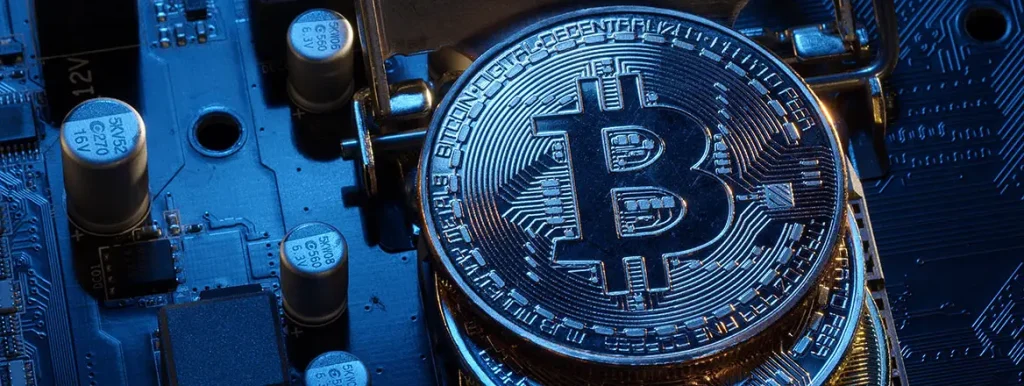
The environmental impact of crypto mining is a topic of growing concern. In 2020-2021, Bitcoin mining consumed approximately 173.42 Terawatt hours of electricity, ranking it as the 27th largest energy consumer globally. This high energy consumption is primarily driven by the need for substantial computational power to solve complex cryptographic puzzles.
The carbon footprint of Bitcoin mining is considerable, with the following impacts:
- Emissions comparable to burning 84 billion pounds of coal.
- To balance these emissions, an estimated 3.9 billion trees would need to be planted.
- Global water use equated to filling over 660,000 Olympic-sized swimming pools.
Addressing environmental concerns involves growing interest in sustainable practices and alternative consensus mechanisms like proof-of-stake. Reducing reliance on fossil fuels and adopting more energy-efficient methods can help mitigate the crypto mining industry’s environmental impact and contribute to a more sustainable future.
Legal and Tax Considerations
The legal and tax considerations surrounding crypto mining can be complex and vary by country:
- In many jurisdictions, the legality of crypto mining remains unclear.
- For tax purposes, miners recognize gross income equal to the fair market value of coins upon receipt.
- In the U.S., mined cryptocurrencies are taxed as ordinary income at the time of receipt based on their market value.
In Israel, mining activities that are classified as a business must pay corporate income tax. This regulation applies specifically to the mining sector. Reward tokens are treated as self-employment income and are subject to self-employment taxes if mining activities are considered a trade or business. Additionally, payments made in cryptocurrency as an employee are treated as wages subject to federal income tax withholding.
Crypto miners can deduct business expenses, like electricity costs, from taxable income. Some regions, like Puerto Rico, offer significant tax incentives, including reduced tax rates on mining income. While a proposed Digital Asset Mining Energy tax was considered, it was eliminated from the federal budget in 2023.
Innovation and Future Outlook
The future of crypto mining is closely tied to innovation and the adoption of new technologies. One such innovation is immersion cooling technology, which uses dielectric liquid to cool ASICs instead of air. This method requires much less energy and maintenance, thereby lowering net costs for miners.
Examples of installations using immersion cooling technology include Argo Blockchain’s Helios facility and Riot Blockchain’s Whinstone facility. These facilities demonstrate the potential for increased efficiency and sustainability in crypto mining operations.
Maintaining efficiency in crypto mining is increasingly challenging as the industry grows. Continuous innovation is essential to keep up with processing efficiency growth. Embracing new technologies and sustainable practices will help the crypto mining industry adapt to the evolving landscape and remain profitable.
Summary
In summary, crypto mining is a complex yet fascinating process that drives the entire cryptocurrency ecosystem. From defining what crypto mining is to exploring the various methods and hardware used, we have covered the essential aspects of this dynamic industry. The role of Proof of Work, mining rewards, and transaction fees are crucial in maintaining the integrity and security of blockchain networks.
As we look to the future, continuous innovation and sustainable practices will be key to addressing the challenges and environmental impact of crypto mining. By staying informed and adapting to new technologies, crypto miners can navigate the evolving landscape and continue to contribute to the growth and security of the cryptocurrency world.
Frequently Asked Questions
Q1. What is crypto mining?
Crypto mining is the process of validating blockchain transactions and generating new coins, which secures the network and prevents fraud. Miners are rewarded with newly created coins for their efforts.
Q2. How does Proof of Work function in crypto mining?
Proof of Work functions as a consensus mechanism that requires miners to solve complex cryptographic puzzles, enabling them to validate transactions and add new blocks to the blockchain. This process ensures network security through the substantial computational power involved.
Q3. What types of hardware are used for crypto mining?
Crypto mining primarily utilizes specialized GPUs and application-specific integrated circuits (ASICs), which are optimized for the intensive computational tasks involved in mining. These hardware types maximize mining efficiency and performance.
Q4. What are the environmental impacts of crypto mining?
Crypto mining has considerable environmental impacts, primarily due to its high energy consumption and substantial carbon footprint. Transitioning to sustainable practices and alternative consensus mechanisms is crucial to mitigate these adverse effects.
Q5. What legal and tax considerations should crypto miners be aware of?
Crypto miners must be aware that the legality of mining can differ by country, and in the U.S., mined cryptocurrencies are taxed as ordinary income based on their market value when received. Additionally, miners can deduct business expenses such as electricity costs from their taxable income.


